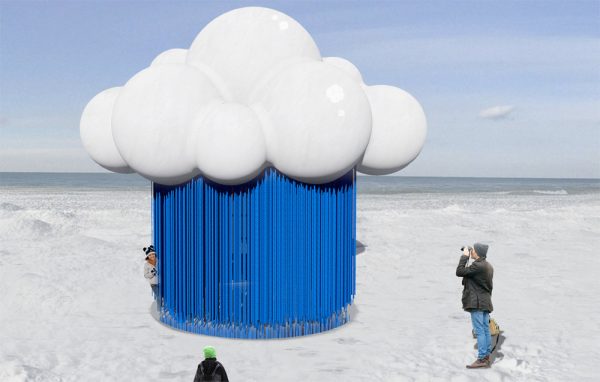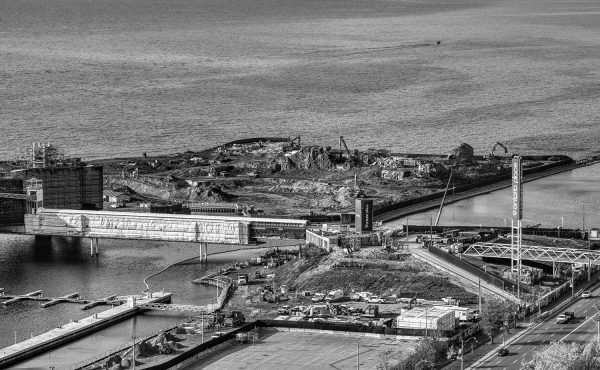Amidst a record-breaking spell of winter heat, Winter Stations, the longtime East End project created to enliven the deepest cold snaps, is opening its tenth annual installation along Woodbine Beach. On February 19th, nine pavilions on the beach itself, and three additional installations on Queen St. East, will open to the public. Drawing inspiration from Winnipeg’s Warming Stations, in 2014 RAW Design partnered with Ferris + Associates and Curio to bring the city back to the beaches during their winter hibernation. The annual exhibition, now organized by RAW, reanimates the beaches’ lifeguard towers with temporary structures inviting interaction and contemplation. From its simple roots with heavy community organizational involvement, Winter Stations has grown into a fixture of Toronto’s art and design scene, engaging an international group of designers and bringing life to a seasonally underused public space.
For this year’s competition, hundreds of designers, artists, and architects from across the world, along with Canadian architecture and design students, submitted their proposals responding to the theme, Resonance. Beyond a sonic interpretation, the organizers intended to encourage retrospection through the diverse Winter Stations archive and reflection on the challenges and opportunities of an exposed, public site in a (usually) harsh climate.
Flipping back through the Winter Stations archive, the sheer variety of approaches to public engagement is impressive. Organizer Dakota Wares-Tani, a design architect at RAW, sees this variety as one of the program’s successes, one especially important to successfully engaging with a wide range of visitors, both young and old. “There’s a fine balance between something that is explicitly predictable to interact with or more nuanced and subtle,” she explained, adding that some of the most successful stations have required more than surface-level interaction to understand. “Stations that have a subtle way of repositioning the city or the beach” — as in 2022’s Enter-face, which literally “reframed” these views — bring visitors deeper into the beach without motion or noise, returning to the original aim of the project to “come back to the beach.” Ultimately, Wares-Tani found that a diverse jury of artists, architects, designers, and writers, produced a diversity of projects that could speak to an audience beyond the design community.
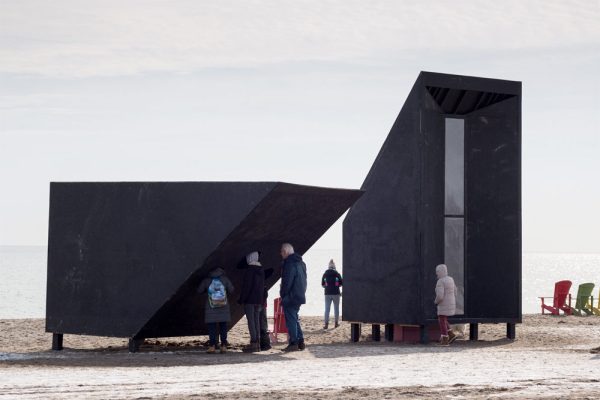
From a designer’s perspective, the practical concerns of the site and short timeline drive many of the creative decisions for each pavilion. Student teams, who unlike the professional teams work with a limited budget and fabricate their own pavilions, have additional constraints to consider. When I spoke with Max Perry, a member of the University of Waterloo Department of Architecture student team, he also pointed to material issues as a primary concern. Many short-term installations “go up for a week and then all that material comes down and goes into the trash,” creating a disproportionate environmental impact.
In response to this, the Waterloo team designed with the intention of disassembling their pavilion, which includes large amounts of salvaged material donated by Ouroboros Deconstruction, and reusing its components in future projects. When drawing inspiration from previous stations, Perry said the team of grad students “liked the pavilions that were kind of fun, and encouraged people to use them instead of just look at them.” The challenge of the design process was to balance this desire for interaction with a need to limit the technology of the project. Limited moving parts hopefully “allow room for ambition but also build in room for failure.”
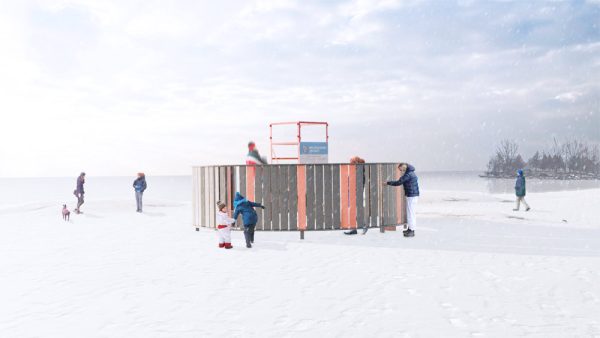
Wares-Tani also reflected on the material impacts of the installations, two of which have been pulled from the Winter Stations archive and will be directly reused this year. “At the beginning there was hope to reuse or dismantle the installations,” which was a requirement of the design brief for several years. Now she hopes that the afterlife of the stations can be tied into local material salvage operations, but the “cloud-based” organization’s lack of physical headquarters or storage space makes this a complex ambition.
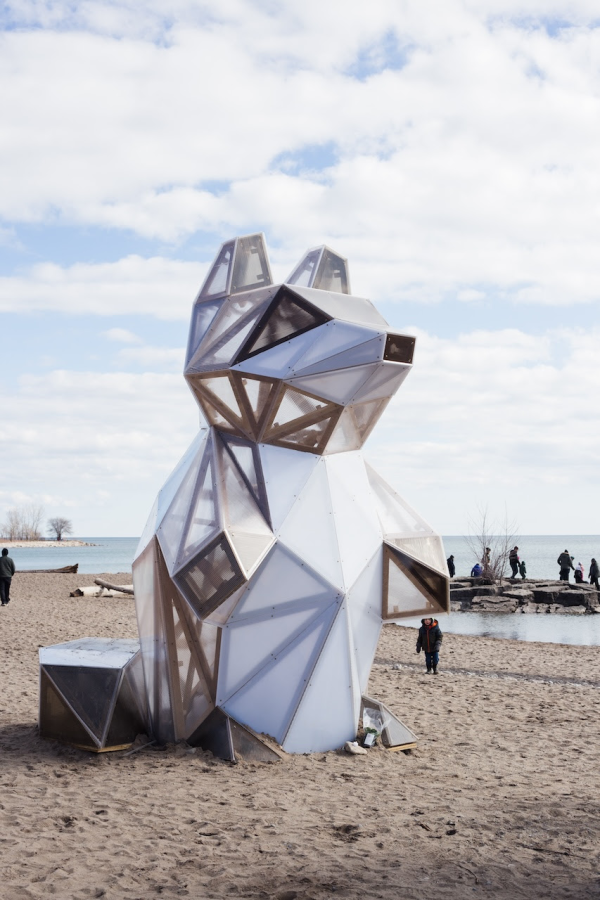
Looking back on the photos of the first Winter Stations in 2014, with Woodbine Beach shrouded in thick snow and ice, both Wares-Tani and Perry were struck by the way the winter setting has changed along with the stations. Ten years of climate change makes these scenes feel almost painfully nostalgic, but Wares-Tani is optimistic that designers will adapt to the changing nature of winter itself. Many of the previous themes have sparked pavilions with political and social messages, and the international competition participants often tackle global as well as local issues.
Engaging with the physical and human context of the project has produced mixed results. 2019’s Migration theme successfully linked into a citizenship ceremony on the beach, but many weather-dependent projects over the years have fallen short of their ambitions during several successive warm and dry winters. While this year’s entry Nimbus prompts visitors to consider increasing drought across the globe, Wares-Tani predicts that more future entries will address the climate itself: “This year has become the most alarming year, so I would anticipate that next year and in the years coming it would become more of a prevalent consideration.”
Considering its informal beginnings and shifting cast of sponsors, contributors, and organizers, Wares-Tani emphasized that the first success of Winter Stations is its own continued existence: “It’s been incredible that RAW has kept it going for so long, and we have community support from city staff and community organizations – it will definitely keep going.”

